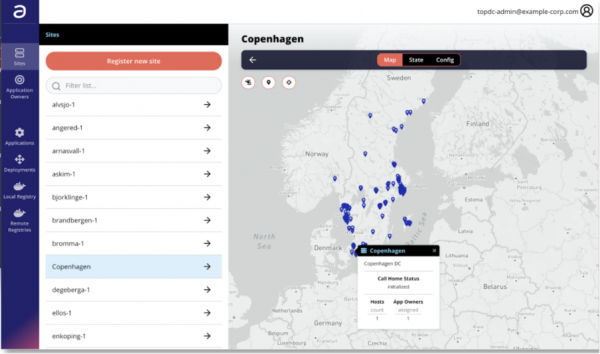It’s well-known that developers want to write and improve applications rapidly to address business requirements. While traditionally, they’re not infrastructure-focused but through necessity, they have had to learn about it to make their application work reliably and efficiently.
Things have started changing for the better with code control, configuration management, and continuous delivery mechanisms and have gone even further with containerised applications. Public clouds learned from the shortcomings of on-premises development methods and used them to develop better practices and tools – thereby making them comparatively better suited to the developers’ mentality.
However, neither of those platforms and tools are well-suited for organisations with a significant number of small sites, generally known as edge locations. Even the tools that allow the developers to standardise deployments for the various platforms, still require dabbling with infrastructure tools/servers – both on the primary and edge locations.
In addition, an even bigger challenge is that often, edge locations have minimal amounts of compute and network connectivity. Yet, the requirement to deploy distributed containerised applications in a standard and consistent fashion, while keeping their security and reliability intact, is a challenge that is well worth solving.
Enter Avassa Systems! Their application management platform not only aims to do that but also frees the developer from having to deal with infrastructure. Once deployed, developers can target their applications towards many edge sites, in compliance with pre-defined criteria, and complete with the autonomy and security that is a mandatory requirement for edge sites.

Architecture
The Avassa platform consists of two main software components:
Avassa Control Tower: Acts as the brain of the deployment and is typically deployed in whichever site is the main location. It can be either a public cloud platform or a private datacenter. The Control Tower is available in a containerised form today and there will be an “as a service” option available soon, too.
Its job is to handle all distributed application management capabilities and ensure convergence of all edge configurations and data continuously, but more importantly, after a break in communication with the edge locations.
Avassa Edge Enforcer: This part is installed on all participating hosts in all edge locations. It manages all local cluster functions and enforces policies and deployment configurations, as determined by the central location.
The best feature is its ability to maintain all the necessary components, including a local container registry, to provide autonomy to a deployment in case of a disruption in network connectivity.
Stand Out Features
While there are many features of this platform that are worth mentioning, a few stand out for me and here is why:
Autonomy
For any mechanism to be truly edge cloud compliant, it needs to be fully self-reliant for long periods of time, if required. Failure of network connectivity should not result in downtime for local users in any way. While public cloud platforms offer decoupled application development capabilities, generally the control and tooling mechanisms are placed in the cloud environment too, making it difficult to develop applications that can withstand prolonged network connectivity failure.
The ability of Avassa Edge Enforcer to have the requisite secrets management, container registry, monitoring, and all the application lifecycle information locally maintained, ensures that edge sites can run autonomously for extended periods, which is brilliant news for developers.
Configuration Management
Another feature equally brilliant is the ease with which the developers can control and maintain configuration as code for all the applications. In addition, they can target the precise deployment configurations for one or many sites, based on simple declarative specification statements.
Applications can be deployed, updated, and even rolled back with ease, and the deployment status of an application amongst all the sites is continuously monitored and visible – all without having to deal with infrastructure at all! Check out this demo from a recent Gestalt It Showcase below to see how easy it is!
Security
Autonomous systems need to be designed with a greater emphasis on security. That’s because they hold all the secrets required to operate independently but might be installed in a potentially insecure environment.
Avassa Systems has implemented a distributed mechanism to store secrets and policies which not only ensures availability but also only stores information relevant to the edge site and application in question. Access to secrets is fully audited and all inter and intra site communication is fully encrypted.
Conclusion
What I’ve described above are just a few of the benefits that this platform can provide to developers who might be seeking a simple, secure, and scalable way to deploy their containerised applications, regardless of the size and/or spread of satellite sites.
If your organisation has a heavily distributed presence and your developers are looking for an all-encompassing distribution mechanism for their applications, do give this platform from Avassa Systems a go and see how it compares!




